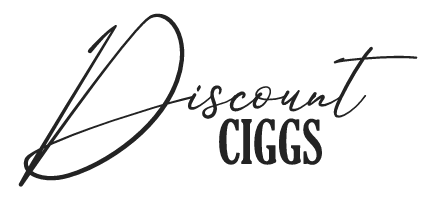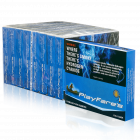The Rise of Tobacco Alternatives in E-commerce
In recent times, the native tobacco industry has experienced a profound evolution, driven by a rising desire for healthier and inventive choices. This transition has led to the emergence of a burgeoning market for tobacco alternatives, finding momentum within the domain of e-commerce. As consumer inclinations undergo a transformation and health considerations assume prominence, diverse non-tobacco nicotine offerings like snus and heated tobacco have emerged as credible rivals to conventional tobacco. This article takes a comprehensive exploration into the surge of these alternatives in the e-commerce landscape. It investigates their burgeoning popularity, conducts a comparative evaluation against traditional tobacco commodities, and thoughtfully addresses the subsequent health and regulatory implications.
Popularity and Reception of Non-Tobacco Nicotine Products
The acceptance and adoption of non-tobacco nicotine items, like snus and heated tobacco, have witnessed notable growth due to their reduced health implications and user-friendly nature. Snus, a moist tobacco powder placed beneath the upper lip, offers a smoke-free and discreet method of nicotine consumption. Contrarily, heated tobacco products entail heating tobacco instead of burning it, leading to fewer detrimental byproducts. The ease and practicality of these alternatives have been pivotal in fostering their expanding embrace among consumers.
The Appeal of Smokeless Options
The rising favor and reception of non-tobacco nicotine goods, such as snus and heated tobacco, can be attributed to their smokeless attributes. The conventional act of smoking entails combustion, releasing detrimental toxins into the atmosphere, adversely impacting both the smoker and bystanders. The allure of smokeless options lies in their capacity to mitigate this concern effectively. By opting for these alternatives, individuals can satiate their nicotine urges without subjecting themselves or others to the risks associated with secondhand smoke. This paradigm shift addresses a crucial health and environmental issue, making smokeless alternatives a compelling choice for those seeking a safer and considerate approach to nicotine consumption.
Flavor Variety and Customization
The increasing prevalence and positive reception of non-tobacco nicotine products, such as snus and heated tobacco, can be attributed to a notable factor: flavor diversity and personalized choices. Unlike conventional tobacco, which offers a limited range of flavors, tobacco brand alternatives present a wide array of taste options, catering to a broader spectrum of consumers. This assortment of choices holds a special appeal, resonating with both novices and seasoned users. The allure lies in the ability to delve into various flavors, allowing individuals to explore and identify preferences that align with their distinct tastes.
The availability of diverse flavors and customization options marks a departure from the monotony of traditional tobacco consumption. This diversity has ignited curiosity and enthusiasm among users, as they embark on a journey to uncover and savor an assortment of novel flavors. Moreover, this feature acknowledges the individuality of consumers, enabling them to tailor their experience to match their unique palate. As a result, the incorporation of flavor variety and customization has transformed the landscape of nicotine consumption, ushering in a new era characterized by a rich and engaging spectrum of choices.
The intricate interplay between flavor options and personalization underscores the consumer-centric approach embraced by tobacco alternatives. This shift not only satisfies a desire for novelty but also acknowledges the diverse preferences of users. By offering a plethora of flavors and avenues for customization, non-tobacco nicotine products have succeeded in capturing the attention and loyalty of a wider demographic, ultimately reshaping the way nicotine is experienced and enjoyed.
Comparative Analysis: Traditional Tobacco vs. Alternatives in E-commerce Sales
In the sphere of e-commerce, a profound transformation in consumer choices and behaviors is evident as the stage for marketing tobacco alternatives gains prominence. This presents a valuable opportunity to delve into a comparative evaluation of conventional tobacco and its alternatives within the context of e-commerce sales. The digital marketplace has emerged as a powerful conduit for the distribution and purchase of tobacco alternatives, symbolizing a significant departure from established consumer patterns. This shift paves the way for an insightful examination of how traditional tobacco products measure up against their innovative counterparts in the realm of online commerce.
E-commerce Convenience
The realm of e-commerce presents a fertile ground for a comparative study contrasting the sales of traditional tobacco with its alternatives. A key facet under scrutiny is the unparalleled convenience that tobacco alternatives offer within the e-commerce sphere. Their compact nature and ease of transportation bestow them with a marked advantage over their traditional tobacco counterparts. Unlike the latter, which demand specific storage conditions and careful handling, alternatives such as snus and heated tobacco seamlessly adapt to the rigors of shipping and handling. This inherent convenience propels them to the forefront of preference for online purchasers seeking a hassle-free experience.
The strategic use of e-commerce capitalizes on the inherent attributes of tobacco alternatives, enhancing their appeal and accessibility. Their compactness not only streamlines logistical aspects but also underscores the forward-looking nature of these products. As the digital marketplace evolves, the convenience factor plays a pivotal role in attracting and retaining a discerning consumer base. By recognizing and leveraging this advantage, tobacco alternatives successfully navigate the dynamic e-commerce landscape, positioning themselves as a pragmatic and user-friendly option for those embracing the digital shopping revolution.
In conclusion, the e-commerce environment not only provides a platform for the tobacco industry's evolution but also underscores the transformative potential of tobacco alternatives. The convenience they offer in shipping and handling, coupled with their alignment to the demands of online trade, underscores their efficacy in meeting the preferences of modern consumers. As e-commerce continues to shape consumer behavior, tobacco alternatives stand poised to spearhead innovation within the industry, capitalizing on their innate advantages to redefine convenience and accessibility for nicotine consumers worldwide.
Changing Buying Patterns
The dynamic landscape of e-commerce provides a fertile ground for a comparative assessment, juxtaposing the sales of traditional tobacco against the burgeoning market for its alternatives. A noteworthy aspect in this analysis involves the shift in purchasing behavior, distinctly observed within the realm of e-commerce platforms. This shift, driven by a collective embrace of healthier choices, underscores the surge in health-conscious consumer preferences. The growing awareness of health implications linked to traditional tobacco has catalyzed a notable uptick in demand for tobacco alternatives. This discernible change serves as a testament to evolving consumer consciousness, favoring products that align with personal well-being.
As the momentum of health-consciousness builds, online retailers strategically tap into this shifting trend. By broadening their offerings to encompass a diverse array of tobacco alternatives, they cater to a discerning consumer base seeking informed choices. This strategic diversification of options empowers consumers to navigate the intricate landscape of nicotine consumption, thereby fostering a sense of agency over their choices.
This paradigm shift underscores the evolving synergy between consumer preferences and e-commerce possibilities. The ascendancy of health consciousness within the realm of tobacco consumption reflects an evolving zeitgeist—one where consumers are not merely passive recipients but active decision-makers shaping the market. This trend serves as a clarion call for both the tobacco industry and online retailers to continually adapt, aligning their strategies with changing consumer sensibilities.
In conclusion, the confluence of changing buying patterns, health-consciousness, and the opportunities presented by e-commerce form a dynamic triad driving the demand for tobacco alternatives. This shift illuminates a broader societal transformation, where individual well-being is a defining factor influencing consumption choices. The role of e-commerce, therefore, transcends being merely transactional, becoming an arena for informed choice and an enabler of positive change in consumer behavior.
Health and Regulatory Implications of Emerging Tobacco Alternatives
As emerging tobacco alternatives gain traction, their potential for harm reduction is evident. However, alongside this promise lie vital health and regulatory concerns that demand careful attention. Balancing the allure of reduced risks with the need for comprehensive oversight remains paramount. The evolution of alternatives necessitates robust regulatory frameworks that ensure responsible manufacturing, transparent marketing, and safe distribution. The intricate interplay between health benefits and regulatory mandates forms a pivotal aspect of the emerging landscape, signifying the intricate challenge of fostering innovation while safeguarding public well-being.
Health Benefits and Risks
The emergence of tobacco alternatives as a potential pathway to reduced harm has triggered a crucial examination of their health and regulatory dimensions. At the core of this evaluation is a balanced consideration of the health benefits and associated risks. These alternatives are often positioned as a safer choice, yet it's imperative to acknowledge that they aren't devoid of risks. While they manifest fewer health hazards compared to traditional tobacco, the presence of any form of nicotine consumption inherently carries health implications.
As the industry charts new territory, a parallel challenge emerges in the regulatory domain. Striking a delicate balance between innovation and safeguarding public well-being necessitates robust regulatory frameworks. This entails a meticulous alignment of product safety, marketing transparency, and informed consumer choice. By integrating these elements, regulatory bodies can harness the potential of emerging tobacco alternatives while upholding the paramount objective of minimizing harm.
In conclusion, the health and regulatory implications of tobacco alternatives are characterized by a multi-dimensional consideration. Acknowledging the comparative health benefits alongside their associated risks emphasizes the importance of informed decision-making. Furthermore, the orchestration of effective regulatory mechanisms ensures that the industry's evolution transpires within a controlled and responsible context. This intricate interplay between health, informed choice, and regulatory frameworks defines the trajectory of emerging tobacco alternatives in their pursuit of transforming the tobacco landscape.
Regulatory Framework
The ascent of emerging tobacco alternatives underscores significant health and regulatory implications. As these alternatives gain ground, regulatory bodies are compelled to reshape their frameworks to accommodate these novel products. The intricate task at hand is to find the equilibrium between ensuring the safety of products and endorsing harm reduction—a delicate endeavor confronting regulatory agencies. The establishment of precise guidelines and regulations is imperative to guarantee the conscientious manufacturing, transparent marketing, and responsible distribution of these alternatives. The evolution of regulatory frameworks mirrors the broader commitment to fostering innovation while ensuring consumer well-being, encapsulating the nuanced journey of shaping an industry that responds to health concerns while offering viable choices.
Conclusion
In conclusion, the surge of tobacco alternatives within the e-commerce landscape indicates a transition toward a health-conscious and consumer-oriented market. The increasing appeal of items such as snus and heated tobacco underscores consumers' evolving tastes, as they seek alternatives to conventional tobacco. E-commerce platforms emerge as key facilitators, granting access to these alternatives and empowering consumers to make selections that harmonize with their personal well-being.
FAQs
Are tobacco alternatives completely risk-free?
While they are considered safer than traditional tobacco, tobacco alternatives still carry some health risks associated with nicotine consumption.
Can I find a variety of flavors in tobacco alternatives?
Yes, tobacco alternatives come in a wide range of flavors, allowing users to explore and choose according to their preferences.
How do tobacco alternatives impact e-commerce trends?
Tobacco alternatives have influenced e-commerce by shifting consumer preferences towards healthier options and changing buying patterns.
Are regulatory authorities addressing the emergence of tobacco alternatives?
Yes, regulatory agencies are developing frameworks to address the manufacturing, marketing, and sale of tobacco alternatives.
Is it advisable to switch from traditional tobacco to alternatives?
Switching to alternatives can be a step towards harm reduction, but individuals should be aware of the potential health risks associated with nicotine consumption.
References
- Canadian Cancer Society: www.cancer.ca
- Canadian Society for Epidemiology and Biostatistics (Tobacco section): www.cseb.ca
- Tobacco Journal International: www.tobaccojournal.com



